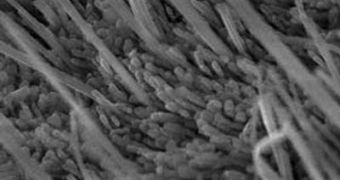Physicists working on ways of building more and more integrated circuits on smaller electronic devices are aware of some simple and undeniable truths, such as that, below a certain point of miniaturization, the forces that are negligible in large-scale electronics have become so strong that they influence the outcome of the entire circuit. Issues such as electromigration and thermomigration make the circuit fail prematurely and drastically reduce performances. Single-Walled Carbon Nanotubes (SWCNT) appear to be the only solution to the problem, and they most likely represent the future of our technological advancement.
“Years ago, everyone thought that the problem of cooling for electronics could be solved. Now we know that's not true. Electronics based on metals have hit a wall. We are done with metals,” University at Buffalo Department of Civil, Structural and Environmental Engineering professor Cemal Basaran, PhD, who is also the UB School of Engineering and Applied Sciences Electronics Packaging Lab director, said.
“It has been assumed that for carbon nanotubes, the electrical heating process would be governed by Joules law, where resistance in a circuit converts electric energy into heat. We are the first to show mathematically, from a quantum mechanics point of view, that carbon nanotubes do not follow Joules law. Even though carbon nanotubes are conductive, they do not have metallic bonds. As a result, they do not conduct electricity the way that traditional metals do,” he also added.
The basic ideas of Basaran's hypothesis will be presented in November, at the American Society of Mechanical Engineers (ASME) International Mechanical Engineering Congress and Exposition in Orlando, the United States. Over the past four years, the researcher has worked with doctoral student Tarek Ragab on quantum mechanics calculations, which have shown that SWCNT produce only one percent of the heat given off by traditional materials such as copper.
His calculations have also proven that nanotubes never experience electromigration and thermomigration, even if high density current is passed through them. “In carbon nanotubes, electric conduction happens in a very different, one-dimensional 'ballistic' way. The electrons are fired straight through the material, so that the electrons have very little interference with the atoms,” the scientist explained.
“If the industry continues this way, when carbon nanotube-based electronics become a reality, U.S. electronics manufacturers may be in a position similar to U.S. car manufacturers today, because they have failed to keep up with advances in engineering,” Basaran cautioned, saying that Asian nations invested heavily in this technology, while the US didn't. The scientist himself has received more than $1 million for his research from sources such as the Navy, which is very interested in this technology for its new class of fully electric ships.

 14 DAY TRIAL //
14 DAY TRIAL //